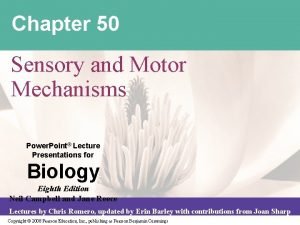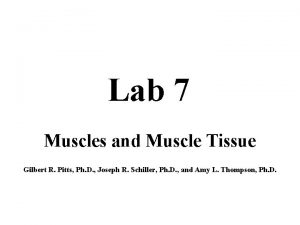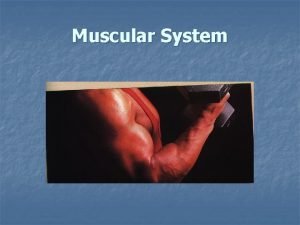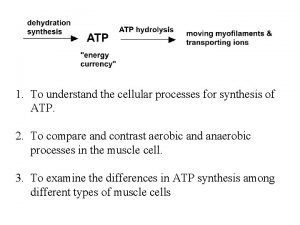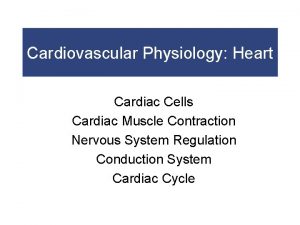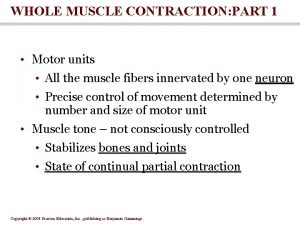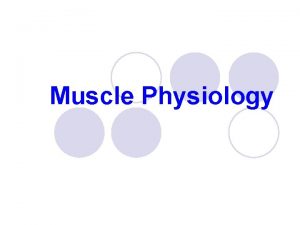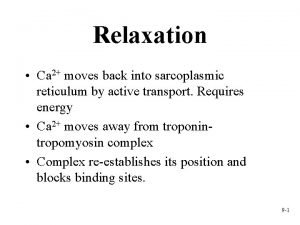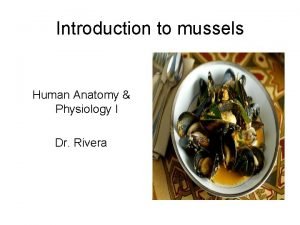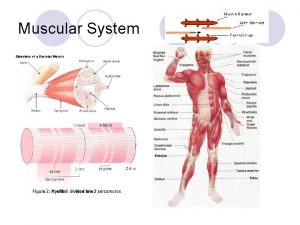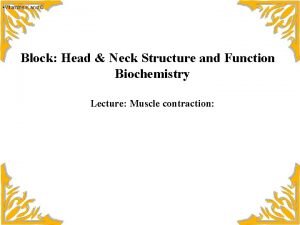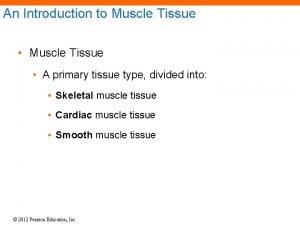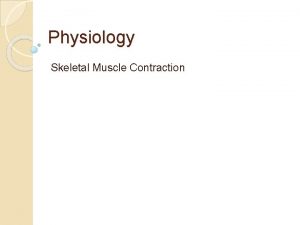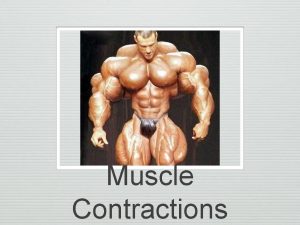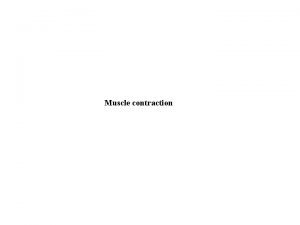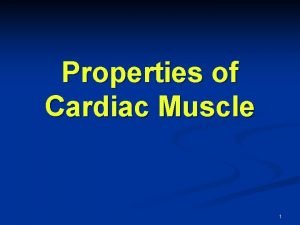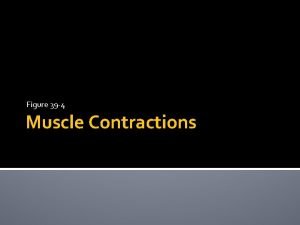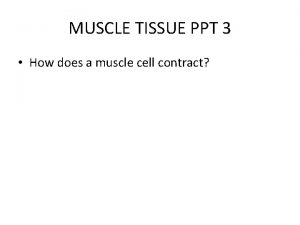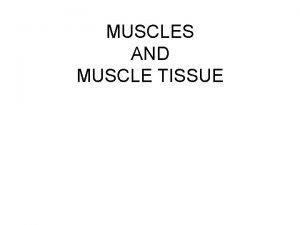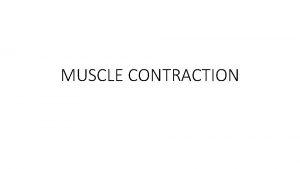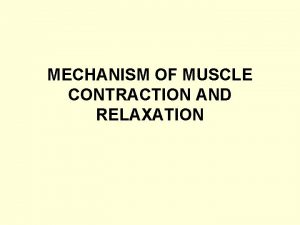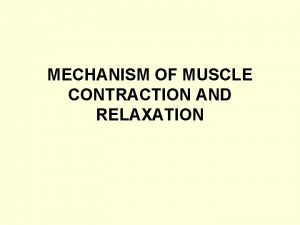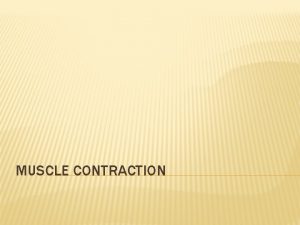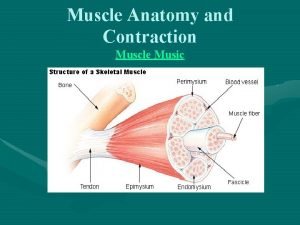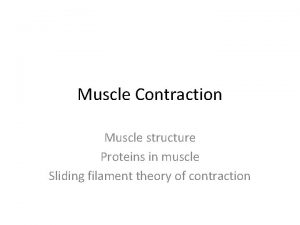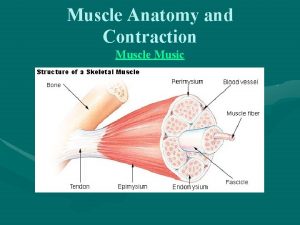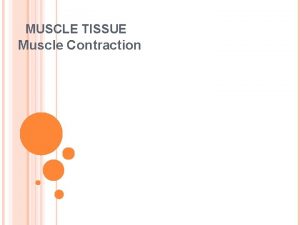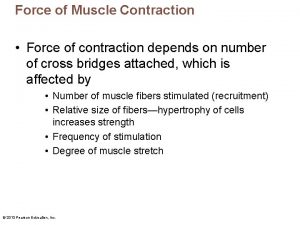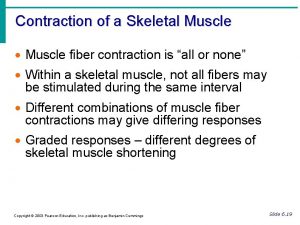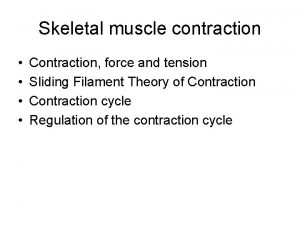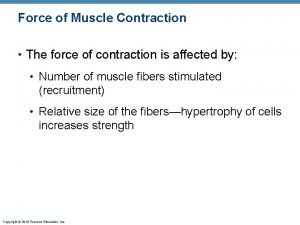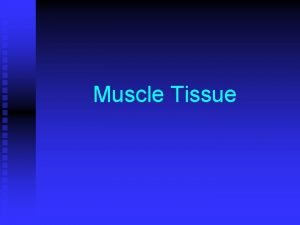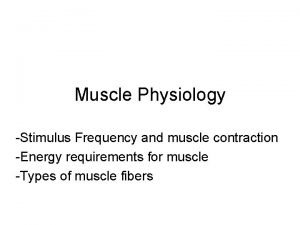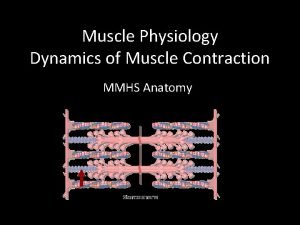The role of tropmyosin in muscle contraction 9





















- Slides: 21

The role of tropmyosin in muscle contraction

9. 7 Nonmuscle motility (1) • Actin-binding proteins affect the localized assembly or disassembly of the actin filaments.

The roles of actin-binding proteins

Nonmuscle motility (2) • Actin-binding proteins (continued) – Nucleating proteins – provide a template for adding actin monomers. (Arp 2/3 complex) – Monomer-sequestering proteins – bind to actin-ATP monomers and prevent them from polymerizing. (thymosin ß 4) – End-blocking (capping) proteins – regulate the length of actin filaments. – Monomer-polymerizing proteins –promote the growth of actin filaments. (profilin)

Nonmuscle motility (3) • Actin-binding proteins (continued) – Actin filament depolymerizing proteins – bind actin-ADP subunits for rapid turnover of actin filaments. Example: cofilin – Cross-linking proteins – alter the threedimensional organization of actin filaments. Examples: vilin, fimbrin

Nonmuscle motility (4) • Filament-severing proteins – shorten filaments and decrease cytoplasmic viscosity. Example: gelsolin • Membrane-binding proteins – link contractile proteins to plasma membrane.

Nonmuscle motility (5) • Examples of Nonmuscle Motility and Contractility – Actin polymerization as a force-generating mechanism • Responsible for some types of motility such as cytoplasmic streaming in Listeria

Nonmuscle motility (6) • Examples of nonmuscle motility and contractility – Cell Locomotion • Cells lacking cilia or flagella move by crawling over a substrate.

Nonmuscle motility (7) • Cell locomotion (continued) – Cells that crawl over a substratum display a repetitive sequence of events.

Nonmuscle motility (8) • Cells that Crawl over the Substratum – Cultured cells crawl by forming a protrusion called a lamellipodium. – Force generation in lamellipodia occurs by adding actin monomers to filaments, prividing temporary anchorage for the cell.

Motility using a lamellipodium

Major steps in formation of a lamellipodium

Lamellipodial extension

Lamellipodial extension

Roles of actin and myosin in lamellipodialbased movement

Nonmuscle motility (9) • Axonal Outgrowth – The bulk of the axon shows little evidence of motile activity. – The tip of the axon (growth cone) shows several types of locomotor protrusions: • Microspikes – point outward to the edge of the lamellipodium. • Filopodia – elongations that extend and retract during motile activity.

The structure of a growth cone

Nonmuscle motility (10) • Axonal outgrowth (continued) – The growth cone explores its environment and elongates its axon. – Lamellipodia and filopodia of growth cone respond to the presence of physical and chemical stimuli.

Nonmuscle motility (11) • Changes in Cell Shape during Embryonic Development – Ectodermal cells elongate and for a neural plate as microtubules become oriented parallel to the cell’s axis. – Change in cell shape produced by contraction of microfilaments. – Curvature of the neural tube causes outer edges to contact one another forming a tube which gives rise to nervous system.

Early stages in the development of the nervous system

Early stages in the development of the nervous system
 Smooth muscle
Smooth muscle Tropmyosin
Tropmyosin Whole muscle contraction
Whole muscle contraction Muscle tissue
Muscle tissue 3 phases of muscle contraction
3 phases of muscle contraction Phases of muscle contraction
Phases of muscle contraction Conduction
Conduction Myopathy
Myopathy Muscle physiology
Muscle physiology Isometric vs isotonic contraction
Isometric vs isotonic contraction Phases of muscle contraction
Phases of muscle contraction Contraction isotonique
Contraction isotonique Types of muscle contraction
Types of muscle contraction Biochemistry of muscle contraction
Biochemistry of muscle contraction Skeletal muscle contraction steps
Skeletal muscle contraction steps Actin and myosin cross bridges
Actin and myosin cross bridges Atp and muscle contraction
Atp and muscle contraction Muscle contraction
Muscle contraction Refractory period in heart
Refractory period in heart Muscle contraction animation mcgraw hill
Muscle contraction animation mcgraw hill Tropomyosin muscle contraction
Tropomyosin muscle contraction Muscle spasm
Muscle spasm


